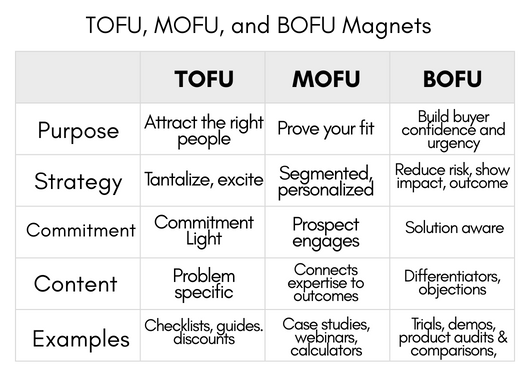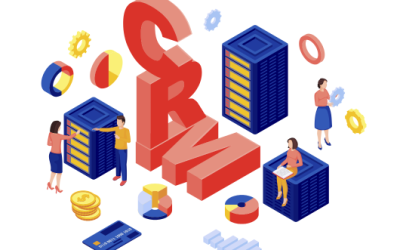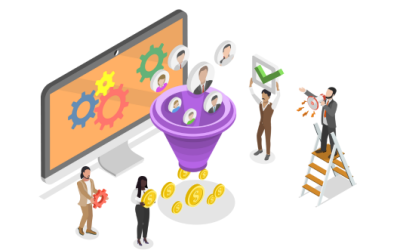[vc_row][vc_column][vc_column_text]What is the main reason many companies invest in a CRM? To manage leads and convert more sales. These are 2 of 3 great reasons to invest in a CRM. Reason #3 is to grow your customer relationships. Once the sale is complete, your new customer’s journey with you begins and your customer will have many touchpoints with you and your team.
Converting sales is an amazing goal. It is the beginning of the client relationship. Enhancing that relationship so that you are not a commodity, builds client loyalty for the long term. When you retain your clients for the long term, you may not have to chase every lead, which helps you reduce Follow Up Fatigue (FUF).
Successful companies:
- Use their CRMs to educate customers and to identify ways to expand sales from current customers.
- Implement a CRM and have their team involved directly from selection through implementation and configure the CRM to support their business goals. (If you are wondering how that looks, you can read our blog “Drive Your CRM Implementation to Success Based on Your Business Goals.”),
- Use the out of the box functionality such as the Sales Funnel, Processes, and Work Flow to track prospects and opportunities, automate client engagement, and to track your delivery of customer service.
The CRM is more than a tool for sales teams. It is designed to be used collaboratively by the company as a whole for successful customer relations. Let’s illustrate this.
Joe’s company, Just the Right Temp HVAC Services, installs and services residential heating and air conditioning systems. Just the Right Temp employs 25 people. – 2 owners, 2 sales managers, 6 salespeople, 3 project managers, 6 installers, 5 service mechanics and a bookkeeper. In the course of Just the Right Temp’s customers’ journey, they will interact with a salesperson, sales manager, project manager, installer, and biller, from the moment they see a marketing piece to the completion of the install.
At Joe’s, the CRM is used to reach prospects, nurturing and qualifying them. As prospects move through each sales stage, the owners, sales managers and sales reps track their opportunities. They use “High Touch, High Tech” blending the personal touch with automated, personalized follow up. When the sale is made, internal actions are sent to production and accounting. Each install is tracked, and Joe’s teams update project information so that everyone is up to date when materials are ordered and delivered to the warehouse and when installation is scheduled.
Upon installation, Joe wants to sell a service contract to produce recurring revenue for its business. Joe’s owners, sales managers and reps, project managers, service teams, and bookkeepers interact with Joe’s customers. Joe’s executives and key managers don’t bug each other about prospect or project status as the CRM keeps them up to date.
Before Joe’s CRM implementation, most processes were manual and tracking prospects and projects was challenging. The customer’s information became fragmented, causing unnecessary communication, increases the risk of error, and follow up fatigue within the company.
This begs the question; how does a larger company lay the foundation for company-wide CRM use?
Adopt the mindset that CRM is about customer relations, not sales. Billing and installation are just as important as a product demo. The customer’s journey does not end at the point of sale. In fact, in the example above, when the installation of a new HVAC system is complete, the customer’s journey continues. The installer is finished, so now it is the responsibility of sales to follow up and nurture for repeat or ongoing business.
Include every stage of the customer’s journey in your CRM implementation. If you are getting ready to select and implement a CRM or already have one and it stops at the close of the sale, expands your CRM team to include every department that interacts with a customer during their journey. This may include tracking ordering equipment, scheduling the install, and quality control among other stages. Now, the billing department may have a specific invoice program that they are using, and project managers may have software to order equipment. Many CRMs can integrate with other software or individuals in these departments can record their tasks, order, etc. under the customer’s profile in the CRM. This ensures that information throughout the customer’s journey is up to date and accessible by everyone who interacts with the customer.
Train your employees to use the CRM collaboratively. This is an investment that is often overlooked, but when employees are not on the same page, they will use it the way they think is best. Or, they may not use it all. Either way, this causes unnecessary frustration within the organization. We recommend that you share your business goals with your employees, and train them on how to use your CRM collaboratively to achieve those business goals.
Customer retention is the name of the game. Successful companies build customer relationships for the long term. Do not dismiss a customer journey stages after you close the sale, because in many ways, what you do after the sale determines if they remain as a customer or not. Including every customer stage in your CRM produces customer satisfaction, retention, and success. It will also reduce follow up fatigue and bring your company together, not just your sales team. If you are looking at CRMs or would like to expand your customer funnel to include every stage from prospect to customer retention, contact us. We would love to talk to you and help you make the right decision that will improve your sales and customer retention.






